How to get better at Mountain Biking
When you ware looking in to how to get better at mountain biking, you need goals no matter what level you are currently at. You could be an experienced downhill hero, or just starting out, the principle is the same.
To be a better mountain biker, you need to work on cardio, endurance and technical skills.
One of the reasons I created MTB-Threads is to help people enjoy mountain biking more, and progression is a huge part of our sport. Follow my tips in this guide, and you will start improving in no time.
How to Get Better at Mountain Biking – Fitness
Obviously, the fitter you are the easier you will find mountain biking. You can ride a lot to build up that fitness, but there is a lot you can do off the bike.
Cross Training
Cross training is an exercise regime that uses several types of training to develop a specific component of fitness. In our case, it is doing other exercises to help us be better on our bikes.
There are lots of benefits to cross training:
- Reduced risk of injury
Mixing it up spreads the stress you put on your muscles and joints. This means that you can exercise more, without overloading vulnerable areas of your body.
- Enhanced Weight Loss
The extra exercise you can do burns off more calories. You will experience more weight loss, when you exercise at a moderate intensity for over 30 minutes
- Improved Overall Fitness
Your cross training can incorporate exercises that develop your muscles as well as your aerobic performance.
- Variety
Cross training mixes up your exercise, meaning you shouldn’t get bored and give up. Varied exercise will keep it interesting and fun.
Strength Training
Building up your muscles will help you turn the pedals in the harder gears. This will help you climb, speed across the flats and accelerate when you need it most. Leg strength is pretty important when you consider that you need to move the weight of the bike, as well as your own.
Check out this Podcast from BikeJames. Here, is described that doing 5 or less repetitions for each exercise is beneficial for strength training.
Additionally, Bodybuilding.com breaks down all the strength training exercises needed for each discipline of mountain biking. They have also outlined a few sample workouts to get you started.
Singletracks magazine have also put together 5 great strength training exercises to make you a better rider. Click here to go to see them.
Body Weight Exercises
Of course there is more to exercising than hitting the weight machines. There are some really effective body weight exercises that you can do. These are pretty good if you need to exercise at home or the gym is busy. Click here to see 7 great body weight exercises for mountain biking. You can work your arms, legs and core very effectively without needing to go to the gym.
Core Training
Strengthening your core is essential for mountain biking. A strong core provides a good platform for your glutes, quads and hip flexors to push the pedals from. This means that you waste less energy and makes your pedaling more efficient. Additionally, a strong core keeps your lower spine in sync with your pelvis, reducing the likelihood of sustaining an injury.
Click here to see a 6-minute core workout for mountain biking.
Click here to see the 6 best pieces of exercise equipment for home cross training.
=>Click here to see some great home exercise equipment<=
Road Biking
Mountain bikers can benefit from taking to the road from time to time. The main benefit, is improved endurance. This is because road biking tends to consist of long steady efforts. Mountain biking is more intense, with short bursts of effort with lots of easier flowy sections. This builds muscle and gives similar benefits to interval training. Therefore, mixing the two disciplines is a good idea.
If you don’t have a road bike (like me), just take out your mountain bike on the roads. The extra weight and suspension travel will make it more difficult, helping you to get to your goals quicker. I like to ride my mountain bike up the road and come back home via mountain bike trails. For me, the thought of a fun descent motivates the hard (boring) slog up the road.
Running
The great thing about riding bikes, is that it is low impact. However, running is a good exercise to incorporate in to your routine. Running increases bone density, which a lot of cyclists lack. If you want to incorporate running in to your training plan, check out Breaking Muscle. This is a fitness blog outlining a great running workout to help anyone that wants to improve their fitness for riding a bike.
Swimming
Swimming is a great way of exercising off-season. It works the whole body and is low impact, so it is great if you have an injury. Swimming also helps build your endurance, as it involves long steady effort. Wiggle has some great workout plans for cyclists who want to get fit by swimming.
Turbo Trainer
A turbo trainer is a great way to stay bike fit when the weather isn’t particularly nice. Pedaling for hours indoors may not see that inspiring, but there are ways to make it more interesting. There are some really clever turbo trainers around these days. They can let you work through training programs, allow you to ride famous routes and even race people online.
=>Click here to learn all about the best turbo trainers<=
How to Get Better at Mountain Biking – Skills
There are certain skills that you need to know how to do. These skills will allow you to ride faster, smoother and on more technical terrain. More importantly, these skills will make mountain biking even more fun.
Cornering
Taking corners properly is one of the most basic skills of mountain biking. It is the key to smooth riding, and can take quite a bit of practice to get it right. But, having the theory of cornering in your head before you get to a corner, will help you in practice.
There are a few different types of corners to tackle when mountain biking:
- Flat corners
- Berms (banked corners)
- Hairpins
- Off camber
How to take flat corners
- Look further down the trail – Don’t look at the trail just in front of your front wheel. You need to look much further ahead, and as you approach the corner, look for any obstacles that could affect your grip. These obstacles could be roots, leaves, gravel etc. Avoid these if possible and look for hard packed dirt and pick your line.
- Body Position – When taking a flat corner, keep your body upright while leaning the bike over. Your inside arm should be straight, while the outside arm is bent. This is something you can practice in a car park for example. When practicing, lean the bike over as far as you possibly can, as you make lots of left and right turns.
- Pedal Position – On flat corners, drop your outside foot, as this has three benefits. The first benefit is that it pushes the outside tread of your tyre in to the dirt, giving you extra grip. The second benefit is that, your centre of gravity is lowered which also helps with grip. While doing this, you should try to drop your heel to drive your bike through the turn. The third benefit is that you will not catch your inside pedal on the ground, a rock or a root, which can cause you to fall off in a bad way.
- Body Weight – You need to be aware of how you distribute your weight between the front and back of your bike. It is quite common for people to drop their weight over the back wheel when they get nervous. But, that takes weight off the front tyre, meaning it can easily slide. Therefore, you need to try to spread they weight over both wheels equally. In a particularly slippy corner, drop your chest towards your handlebars. This will increase the weight on your front tyre, pushing it in to the dirt for grip. The back wheel may slide a bit, but this is good feedback for you to judge how slippy it is.
- Bike setup – OK, this isn’t about technique, but there are certain things about your bike that can affect your cornering. For example, a long stem, brings your weight forward. This means you will need to adjust your body position to compensate.
Click here to learn about handlebars and stem length and how they affect your riding.
Your choice of tyres is also a big factor in how your bike handles. You can get tyres that are fast rolling and you can get tyres that have more grip. Your tyre choice should suit the conditions and terrain that you usually ride.
Click here to learn how to choose the correct tyre for you.
While we are talking about tyres, tyre pressure is a big factor in how much grip you have. Lower pressures will give you more grip, but it will be harder to pedal. High pressures give less grip, but allows them to roll faster. Using tubeless tyres lets you drop your pressure for extra grip, but stops you getting punctures.
-
6. Braking – Make sure all your braking is done before you enter the corner. This is because braking while turning is asking the tyres to give you lateral grip in the corner and to slow you down. This causes you to lose grip, making your cornering messy and ultimately slower.
How to take Berms
Berms are super fun. These are banked corners on mountain bike trails. The raised part of the corner gives you more support, more grip and allows you to turn faster than you would be able to on a flat corner. The technique for taking berms is similar to the technique for flat corners with some differences.
- Look at the corner – You are looking to see how big the banked part is, this is because, you will get more grip, the bigger and steeper it is. You also need to spot your line. This is so you exit the corner in order to get a good entry point for the next corner.
- Braking – Just as with any other corner, you want to get all your braking done before you enter the berm. This way, you will find more grip and be able to lean your bike over further.
- Look ahead – As you enter the corner, you need to look where you want to go. This is especially important if you have a series of corners that link up.
- Choose your line – If you are riding large bike park style berms, it is good to get high up the bank. This will give you lots of grip and give you height to drop down in to the turn. Just be careful to not lose your front wheel over the top, this is not something you can recover from.
- Pedal position – Drop your outside foot to push the edges of your tyres in to the dirt. However, if you are riding in to a particularly fast berm, you should try to keep your pedals level. Doing this lets you absorb the force as you whip round.
- Leaning – The faster you hit the berm, the further you need to lean the bike over. If you don’t enter the berm fast enough and without enough lean, you will find your self sliding down the bank. This can also cause you to fall in to the bottom of the berm. On a large berm, this can be a long way down. Therefore, you really need to get this right, to make sure you stick to the wall of the berm.
- Pumping – The shape of some berms will allow you to pump the bike to get a bit more speed. These are shaped like an upturned bowl and are reasonably tight. They allow you to really whip round the bend. This is where your pedals should be level, allowing you to pump effectively.
Pumping
Pumping your bike is an essential skill to learn. It is the basis of a lot of different skills that will help you get down the trail. When you pump your bike, your drive it in to the ground to gain traction, control and speed. A pump can give you free speed in a straight line or a corner. It can also make features on the trail, such as bumps and rollers opportunities for more speed and more fun.
The main principle of pumping, is to make yourself heavier at the right time. The simplest way to think about how to do this, is to imagine standing on some bathroom scales. How would you make the reading on the scales show more weight? You swing your hips forward and push your feet down.
This is how it should feel on your bike. Doing this on a bump in the trail or a pump track will give you extra speed. Timing is key to getting the pump right, however, you will know when you get it right, because it will feel right.
When you are in the bottom of the dip, you should be at your heaviest, before making yourself light to go up the other side. The time when you are heavy, is when you get your speed. In summary, you want a “heel down” squat in the bottom of the dip.
Try not to put too much force in to your handlebars. Doing this, puts too much weight on the front wheel, and if you hit something, you may go over the bars. Keeping your weight back makes it easier to squash in to the pump with your legs and hips.
Remember:
- Get your weight in the right place
- Squash the bike with your legs and hips
- Get your timing right
Manual
Performing a manual is lifting your front wheel up in the right way. This is a really useful skill to have, as it will allow you to get over rocks, roots and lots of other obstacles that you will encounter on the trail.
The first thing to remember is to use your weight to lift the front wheel. To do a proper manual you need to refrain from yanking up on the bars.
You need to start your manual from initiating a pump. Then you need to roll body over the back wheel. Think about moving your hips in an “L” shape, down (from the pump) and backwards over the back wheel.
The other important things to think about, is to keep your arms locked straight. This will make the bars lift and move back with you. If you yank up the bars, you will lift the wheel a little, but pull your weight forward. This will make the wheel drop back down very quickly.
Once you have mastered the manual to lift the front wheel, you can now move on to keeping it in the air.
To do this, once you have the front wheel in the air, you need to get your weight further over the back wheel. This will give you more control over the bike.
When you feel the wheel dropping, move backwards. When you feel like it is going to high, move forwards. You can also dab your back brake, to make sure you don’t loop the bike all the way back.
Once you get the hang of it, it should feel pretty effortless. If not, it usually means that you haven’t got your “L” shape right.
Advancing Your Skills
A great way to advance your mountain biking, is to ride with more experienced riders. However, you do need to be careful with the information you are given by them. They may have great intentions, but a misunderstanding or any missing details can be dangerous.
Your more experienced riding buddy may have forgotten what it was like to be at your level. Therefore, they may take you on terrain that is a bit too advanced for you. A great thing to do is book yourself on a course. Many trail centres have mountain bike coaches, they will be able to take you through all the techniques needed and will give you constructive criticism.
=>Check out these destination guides for examples of places to ride<=
Have I left anything out? Please let me know your thoughts and questions in the comments section below.
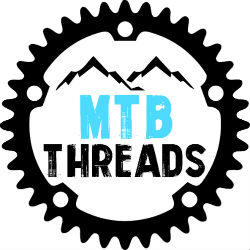
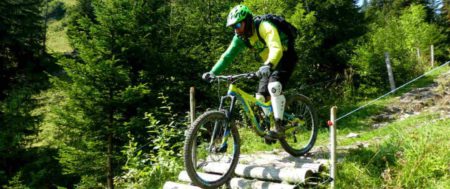







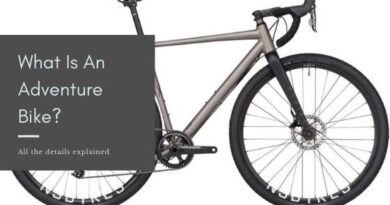
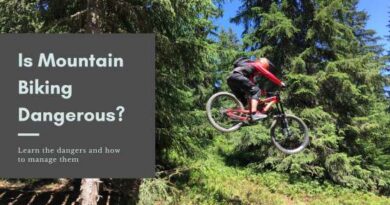
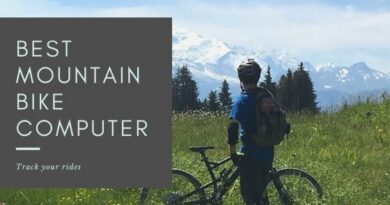
Pingback: 10 Mountain Biking Health Benefits - More reasons to get on a bike